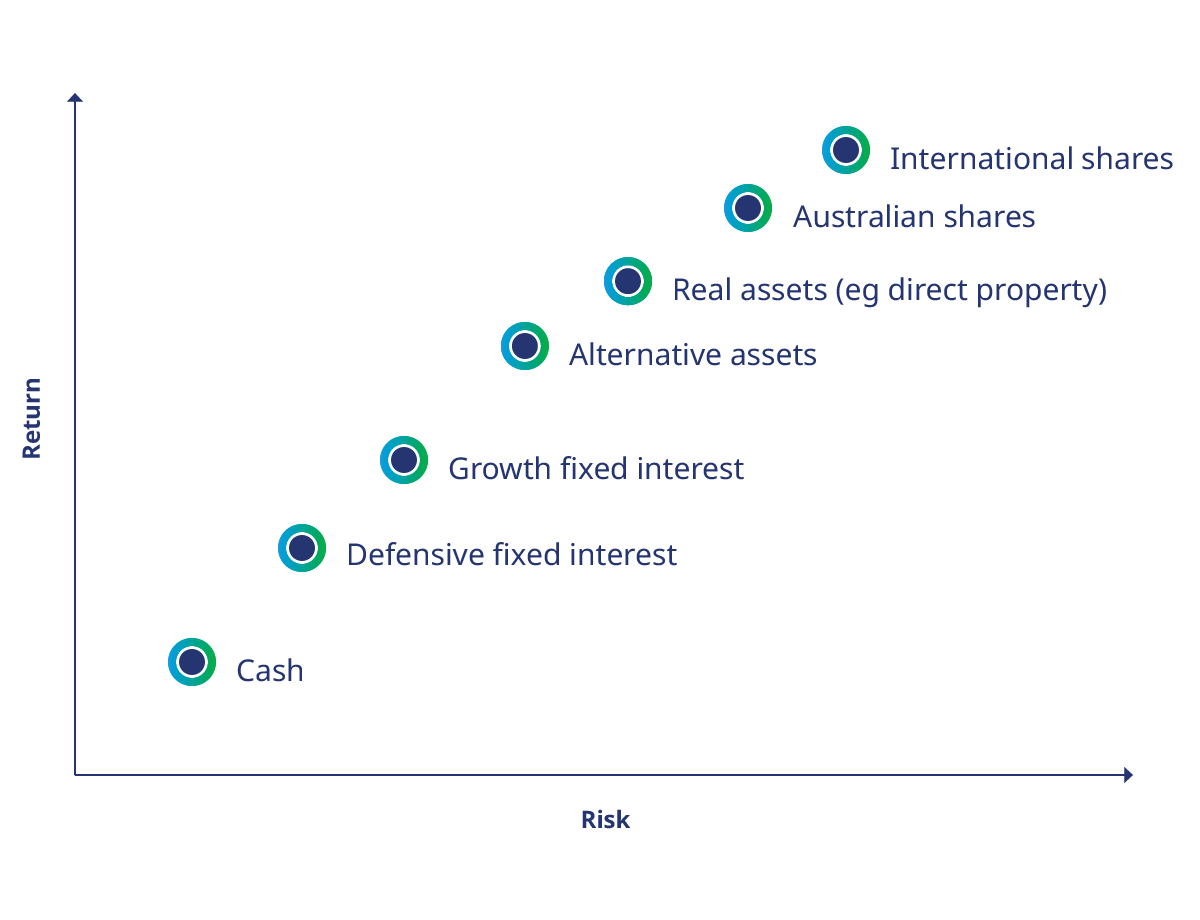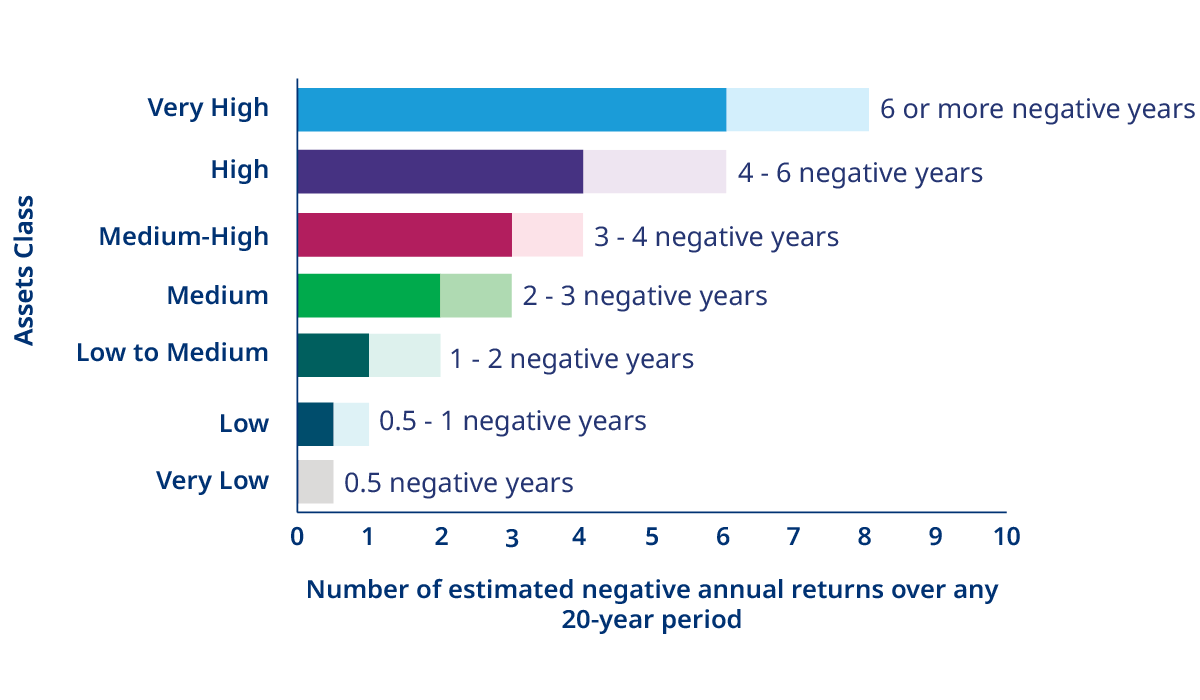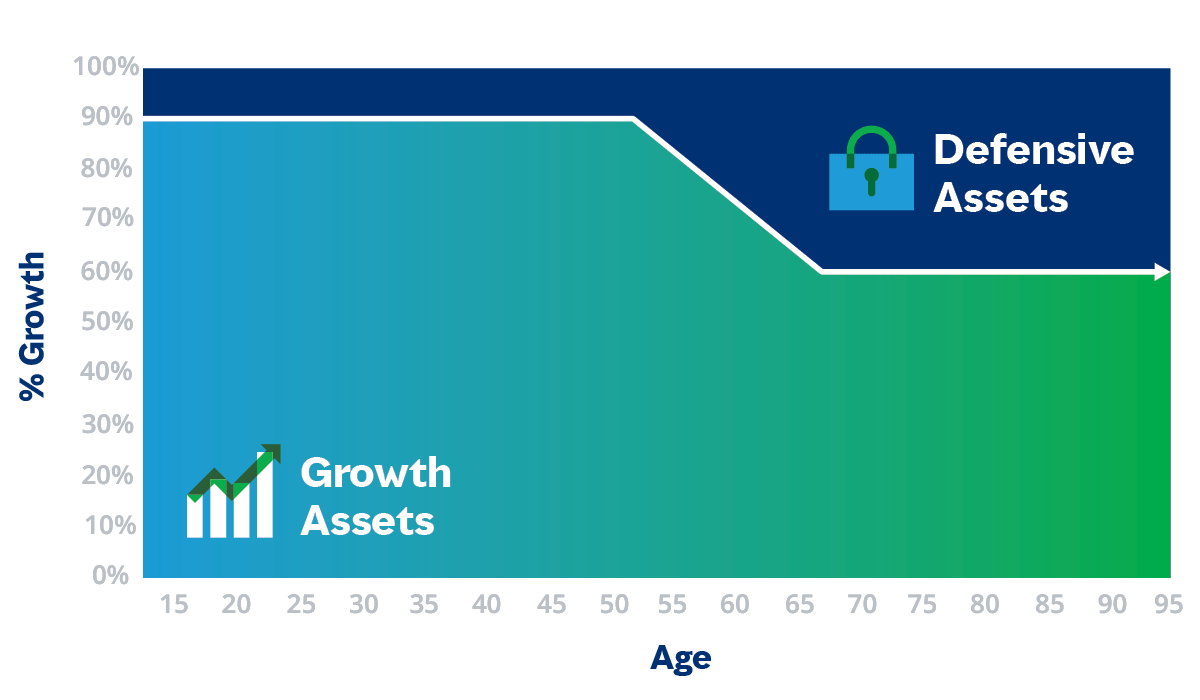Risk is something many of us naturally avoid, especially when it comes to our personal well-being or our finances. Reward on the other hand, is a word that draws us in. When it comes to investing, risk and reward are intrinsically linked.
All investments carry some risk and offer some potential reward – in the form of positive returns. The challenge lies in balancing the two.
In this article we explore:
- Risk and your investment options
- The Standard Risk Measure
- Your investment timeframe
- Your attitude to risk
- How we manage investment risk on your behalf
What is investment risk?
Investment risk is simply the possibility of getting back less than you put in – that is, losing money rather than making it. Understanding how risk applies to the different investment options available to you and recognising your own attitude to investment risk, will help you decide how best to invest your super.
Weighing up your options
Mercer Super offers a range of products with different investment options for you to choose from, and each is underpinned by a range of asset classes – such as shares, property, fixed interest and cash.
Different investment options carry varying levels of risks, depending on their mix of underlying assets.

Generally, growth assets (like shares) have the potential to produce higher returns over the long-term, but they also carry the highest level of investment risk.
That’s because they can go up and down in value significantly over a short period. This is known as volatility.
Lower risk assets (defensive assets, like cash and bonds) tend to produce lower but more stable long-term returns than growth investments.
For example, a ‘growth’ option may include 77%-90% growth assets, while a ‘conservative’ option may have 40%-60% allocated to growth assets.
The Standard Risk Measure
To help you easily compare investment risk across different funds and products, all superannuation investment options carry a “risk label”, known as the Standard Risk Measure.
The Standard Risk Measure estimates the number of negative annual returns an investment option is likely to experience in any 20-year period.
It applies a scale from Very Low (Less than 0.5) to Very High (6 or more).
So, if you’re invested in a “Very High” risk option, you may experience negative annual returns six times, or more, over 20 years.
Risk labels are not a guarantee of the number, size, or frequency, of negative annual returns.

Mercer SmartPath® helps manage risk for you

“Lifecycle” investment options, like Mercer SmartPath, automatically adjust your level of risk as you get closer to retirement.
Mercer SmartPath invests in more growth assets through your younger and middle working years, before gradually increasing the exposure to more defensive assets as you approach retirement.
The Standard Risk Measure associated with your Mercer SmartPath investments will range from “High” to “Medium”, depending on your age.
Time in market
While it’s important to consider the risk of short-term losses, it’s equally important to think about potential long-term gains. How long your money will be invested is an important consideration when it comes to assessing investment risk.
This is particularly relevant when it comes to your super, because it’s typically designed to be a long-term investment.
If you're still a long way off retirement, you may have time to ride out short-term market volatility and take advantage of the potential for long-term returns. Avoiding riskier investments at this stage may reduce your chances of growing your super over the long run – representing an opportunity risk.
If you’re closer to retirement, you might consider more defensive investments to help cushion your super balance from large market falls at the wrong time – this is called sequencing risk.
Recognise your attitude to risk
Recognising how you feel about investment risk and how you will respond to it can help determine which investment option(s) are best suited to you and your current situation.
Risk attitudes also carry labels, from “Very Cautious” through to “Very Confident”. And it’s good to know which one most closely aligns with your own attitude.
If you’re a cautious investor at heart but are invested in a high-risk option, you might panic at the sight of negative returns, which might trigger an emotional response and cause you to sell your riskier investments when the prices are low. This panic move could result in turning potential losses into real losses.
The more comfortable with your level of risk, the more likely you are to stay the course and stick to your investment plan.
Whatever your risk appetite, you should always consider both risk and potential returns before deciding the type of investment to place your super in.
Very confident |
|
Confident |
|
Slightly confident |
|
Slightly cautious |
|
Cautious |
|
Very cautious |
|
How we manage investment risk on your behalf
All investments, including super, carry some risks. To manage these risks we diversify across different asset classes, countries and investment managers. This helps to reduce risks in many different ways. Some of the ways that Mercer manages investment risks are below.
- Offering you a diverse range of investment options
- Investing across different asset classes to reduce market risk, inflation risk and liquidity risk
- Investing across different countries to reduce political risk, inflation risk, interest rate risk, liquidity risk and currency risk
- Investing in a number of individual assets within each asset class to reduce liquidity risk, interest rate risk and credit risk
To understand more about investment risk, refer to the relevant Product Disclosure Statement (PDS) for your product.
You can also speak with our Helpline Advice team who can provide you with financial advice regarding your super account and the investment options we offer. You can make an appointment with this team by completing the call back form.
Mercer Super members have access to
e-Advice
Better understand your attitude to risk and make informed decisions about your investment strategy with e-Advice.
Read next:

Understanding superannuation contributions and taxes
By adding a little bit extra to your super, you could enjoy more retirement savings and several tax benefits.

Diversification and your super
Learn about investment diversification and how it helps grow and protect your super account balance.

The ins and outs of additional personal super contributions
Your super is a long-term investment – additional contributions you make today can have a significant impact on your balance and retirement outcomes.
Disclaimer: Issued by Mercer Superannuation (Australia) Limited ABN 79 004 717 533, Australian Financial Services Licence 235906, the trustee of the Mercer Super Trust ABN 19 905 422 981 ('Mercer Super'). This information is general advice and does not take into account your objectives, financial situation or needs. Before acting on this advice, please consider the Product Disclosure Statement available at mercersuper.com.au. The product Target Market Determination can be found at mercersuper.com.au/tmd.
The value of an investment in the Mercer Super Trust may rise and fall from time to time. The investment performance, earnings or return of capital invested are not guaranteed.
Past performance is not a reliable indicator of future performance.
